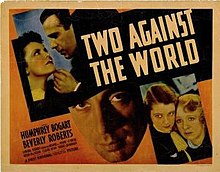
In a Lonely Place is a 1950 American film noir directed by Nicholas Ray and starring Humphrey Bogart and Gloria Grahame, produced for Bogart's Santana Productions. The script was written by Andrew P. Solt from Edmund H. North's adaptation of Dorothy B. Hughes' 1947 novel of the same name.

Humphrey Bogart (1899–1957) was an American actor and producer whose 36-year career began with live stage productions in New York in 1920. He had been born into an affluent family in New York's Upper West Side, the first-born child and only son of illustrator Maud Humphrey and physician Belmont DeForest Bogart. The family eventually came to include his sisters Patricia and Catherine. His parents believed he would excel academically, possibly matriculate at Yale University and become a surgeon. They enrolled him in the private schools of Delancey, Trinity, and Phillips Academy, but Bogart was not inclined as a scholar and never completed his studies at Phillips, joining the United States Navy in 1918.
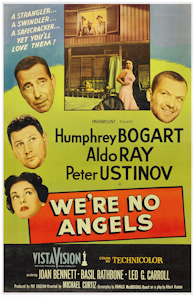
We're No Angels is a 1955 Christmas comedy film directed by Michael Curtiz, starring Humphrey Bogart, Peter Ustinov, Aldo Ray, Joan Bennett, Basil Rathbone, Leo G. Carroll, and Gloria Talbott. Shot in both VistaVision and Technicolor, the film was a Paramount Pictures release.

Conflict is a 1945 American black-and-white suspense film noir made by Warner Brothers. It was directed by Curtis Bernhardt, produced by William Jacobs from a screenplay by Arthur T. Horman and Dwight Taylor, based on the story The Pentacle by Alfred Neumann and Robert Siodmak. It starred Humphrey Bogart, Alexis Smith, and Sydney Greenstreet. The film is the only pairing of Bogart and Greenstreet of the five in which they acted together where Bogart rather than Greenstreet is the villain or corrupt character. There is also a cameo appearance of the Maltese Falcon statue.

The Left Hand of God is a 1955 American drama film. It was directed by Edward Dmytryk and produced by Buddy Adler, from a screenplay by Alfred Hayes, based on the novel The Left Hand of God, by William Edmund Barrett.

The Amazing Dr. Clitterhouse is a 1938 American crime film directed by Anatole Litvak and starring Edward G. Robinson, Claire Trevor and Humphrey Bogart. It was distributed by Warner Bros. and written by John Wexley and John Huston, based on the 1936 play The Amazing Dr. Clitterhouse, the first play written by short-story writer Barré Lyndon, which ran for three months on Broadway with Cedric Hardwicke after playing in London.

The Man I Love is a 1947 American film noir melodrama directed by Raoul Walsh and starring Ida Lupino, Robert Alda, Andrea King and Bruce Bennett. Produced and distributed by Warner Brothers, the film is based on the novel Night Shift by Maritta M. Wolff. The title is taken from the George and Ira Gershwin song "The Man I Love", which is prominently featured.
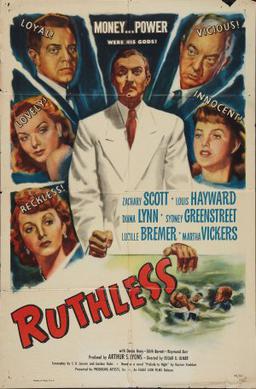
Ruthless is a 1948 American film noir drama film directed by Edgar G. Ulmer starring Zachary Scott, Sydney Greenstreet and Louis Hayward.

Body and Soul (1931) is an American Pre-Code action drama film directed by Alfred Santell and starring Charles Farrell, Elissa Landi, Humphrey Bogart, and Myrna Loy. The story, adapted from the stage play Squadrons by Elliott White Springs and A.E. Thomas, depicts Royal Air Force pilots in World War I.

Bad Sister is a 1931 American pre-Code drama film directed by Hobart Henley. The screenplay by Edwin H. Knopf, Tom Reed, and Raymond L. Schrock is based on the 1913 novel The Flirt by Booth Tarkington, which had been filmed in 1916 and 1922.
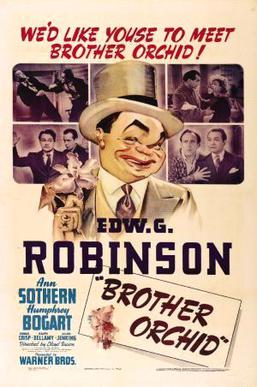
Brother Orchid is a 1940 American crime/comedy film directed by Lloyd Bacon and starring Edward G. Robinson, Ann Sothern and Humphrey Bogart, with featured performances by Donald Crisp, Ralph Bellamy and Allen Jenkins. The screenplay was written by Earl Baldwin, with uncredited contributions from Jerry Wald and Richard Macauley, based on a story by Richard Connell originally published in Collier's Magazine on May 21, 1938. Prior to the creation of the movie version of Connell's story, a stage adaptation was written by playwright/novelist Leo Brady. The script was originally produced at Catholic University of America in Washington, D.C..
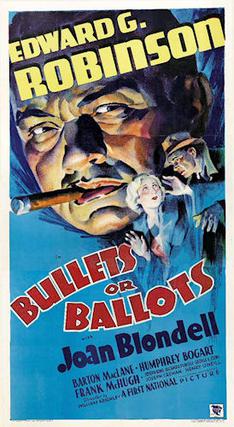
Bullets or Ballots is a 1936 American crime thriller film starring Edward G. Robinson, Joan Blondell, Barton MacLane, and Humphrey Bogart. Robinson plays a police detective who infiltrates a crime gang. This is the first of several films featuring both Robinson and Bogart.
San Quentin is a 1937 Warner Bros. drama film directed by Lloyd Bacon and starring Pat O'Brien, Humphrey Bogart, and Ann Sheridan. It was shot on location at San Quentin State Prison.
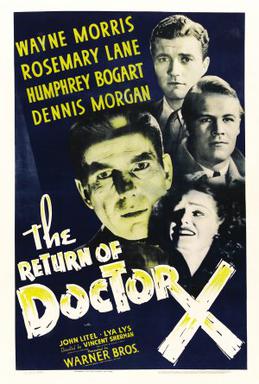
The Return of Doctor X is a 1939 American science fiction-horror film directed by Vincent Sherman and starring Wayne Morris, Rosemary Lane, and Humphrey Bogart as the title character. It was based on the short story "The Doctor's Secret" by William J. Makin. Despite supposedly being a sequel to Doctor X (1932), also produced by Warner Bros., the films are unrelated.
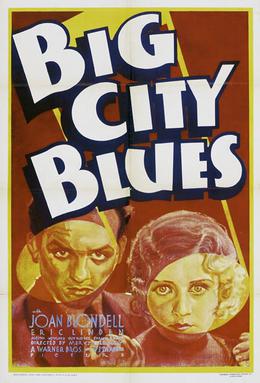
Big City Blues is a 1932 American pre-Code drama film directed by Mervyn LeRoy and distributed by Warner Bros. The film is based on the play New York Town by Ward Morehouse and stars Joan Blondell and Eric Linden, with uncredited early appearances by Humphrey Bogart and Lyle Talbot.

Men are Such Fools is a 1938 American romantic comedy directed by Busby Berkeley and written by Norman Reilly Raine and Horace Jackson. The film stars Wayne Morris, Priscilla Lane, Humphrey Bogart, Hugh Herbert, Johnnie Davis, and Penny Singleton. The film was released by Warner Bros. on July 16, 1938. The movie is adapted from the novel by the same name, Men Are Such Fools, by Faith Baldwin.

The Big Shot (1942) is an American film noir crime drama film starring Humphrey Bogart as a crime boss and Irene Manning as the woman he falls in love with. Having finally reached stardom with such projects as The Maltese Falcon (1941), this would be the last film in which former supporting player Bogart would portray a gangster for Warner Bros..
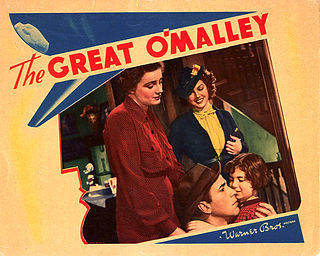
The Great O'Malley is a 1937 American crime drama film directed by William Dieterle and starring Pat O'Brien, Sybil Jason, Humphrey Bogart, and Ann Sheridan. The 1925 silent version The Making of O'Malley starred Milton Sills, Dorothy Mackaill and Helen Rowland.
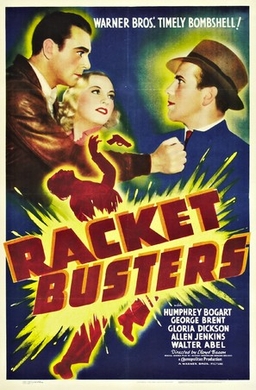
Racket Busters is a 1938 American film directed by Lloyd Bacon. The film is stars Humphrey Bogart and George Brent and is about a crime in the trucking industry.

The Gentleman from Arizona is a 1939 American Western film directed by Earl Haley and written by Earl Haley and Jack O'Donnell. The film stars John 'Dusty' King, J. Farrell MacDonald, Joan Barclay, Ruth Reece, Craig Reynolds and Nora Lane. The film was released on December 25, 1939, by Monogram Pictures.
